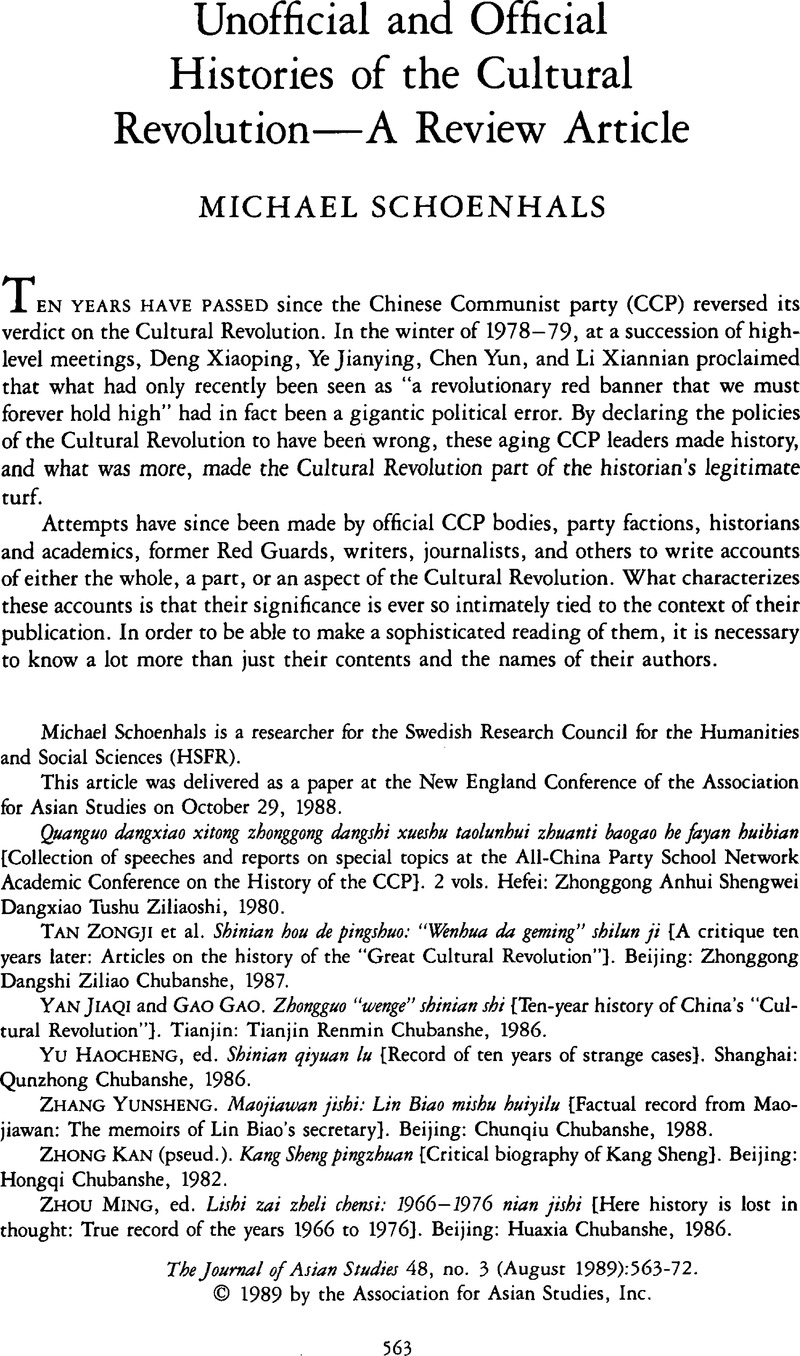Chunming, Jin.
1980b. “‘Sirenbang’ shi wodang lishi shang zuoluan zuijiu de yige fangeming jituan” [The ‘Gang of Four’ is the counterrevolutionary clique with the longest record of disruption in the history of our party]. In
Quanguo dangxiao xitong zhonggong dangshi xueshu taolunhui zhuanti baogao he fayan huibian [Collection of speeches and reports on special topics at the All-China Party School Network Academic Conference on the History of the CCP]
2:
58–
73.
Hefei:
Zhonggong Anhui Shengwei Dangxiao Tushu Ziliaoshi.
Google Scholar 